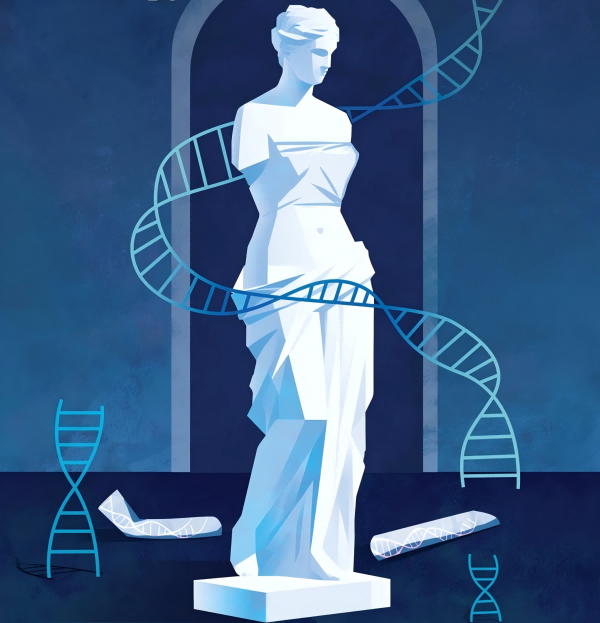Nature Ecology & Evolution | Researchers Discover That “Less Is More”: Gene Loss Drives Adaptative Evolution in a Pandemic Pathogen
In a study published in Nature Ecology & Evolution, Daniel FALUSH and YANG Chao's team from the Institute of the Chinese Academy of Sciences, along with Jaime MARTINEZ-URTAZA's team from Universitat Autònoma de Barcelona and WANG Hui' team from Shanghai Jiao Tong University, reveal a surprising evolutionary insight: sometimes, losing genes rather than gaining them can help a bacterium present in the ocean that causes serious infectious disease outbreaks in many countries.
Can losing genes be beneficial?
When we think of evolution, we often imagine organisms changing or gaining new genes to adapt—like growing wings, developing resistance, or evolving new behaviors. Across the tree of life, both spontaneous mutations and gene acquisition are classic tools of adaptation.
But in this study, researchers explore a lesser-known and scarcely explored evolutionary path: gene loss. The idea is reminiscent of the Chinese saying “舍得” (she de)—which suggests that sometimes you must let go to gain. In Western culture, there's a similar concept: “less is more.” Could losing genes actually help a pathogen become more successful?
Vibrio parahaemolyticus: A rising threat from the sea
The research focused on Vibrio parahaemolyticus, a bacterium that causes seafood-related infections and is a major culprit behind foodborne disease outbreaks—especially in China. In particular, researchers studied a pandemic clone of the bacterium, composed of several subtypes or strains. This expanding clone is mainly present in Asia, where it was first detected in 1996 in Japan and India, and significant outbreaks have been subsequently reported on the west coast of the USA and in some Latin American countries such as Chile, Peru and Mexico.
While studying the evolution of this pathogen, the researchers noticed an intriguing pattern, wave succession: different subtypes of the bacteria seemed to replace each other over time, like waves in the ocean. Eventually, a dominant type—nicknamed Wave-4—took over and caused the majority of human infections. This dynamic reminded the researchers of how COVID-19 variants (like Alpha, Delta, Omicron) replaced each other during the pandemic.
Losing genes helps the bacteria succeed
To understand what gave Wave-4 its competitive edge, the researchers dug into its genetic blueprint. To their surprise, it wasn’t a new gene or a mutation that made this strain dominant—but the loss of certain genes.
Specifically, Wave-4 had lost a group of genes involved in utilizing putrescine, a small molecule found in the environment and human gut. Without these genes, the bacteria gained advantages in two key areas. First, in environmental survival, since it could form more resistant biofilms, which protect the bacteria from stress and make it easier to adhere to surfaces, allowing it to survive during the long journeys from one point of the planet to another. And second, in human transmission, sticking to human cells more easily and colonizing the gut more effectively.
Gene loss also produces weaker bacterial infections. This supports the evolutionary idea known as the virulence trade-off hypothesis. Pathogens that are too deadly (high virulence) may kill their host too quickly and thus fail to spread. In contrast, pathogens that strike a balance between harming and spreading, such as the seasonal flu, can become more successful over time. This trade-off might explain why Wave-4 became so dominant.
A common strategy across species
The researchers didn’t stop with Vibrio parahaemolyticus. They found similar gene losses in other bacterial species, such as Vibrio cholerae and Escherichia coli, which also resulted in stronger biofilms and greater cell adhesion. This points to a case of convergent evolution: when different organisms independently evolve similar traits because they face similar challenges.
According to the scientists, gene loss could be a common, powerful and underappreciated mechanism for adaptation in bacteria.
An enigma solved after 30 years and yet another to be discovered
The findings of the study now published shed light on an enigma that had not been solved in the past 30 years related to the global expansion of V. parahaemolyticus. And this was possible thanks to the volume of data currently available: the scientists worked with a set of large-scale genomic data from around the world, with over 12,000 genomes representing six continents and 34 countries.
“Molecular epidemiology has given us new tools for tracing the sources of human infection but also allows evolutionary studies, which can reveal the strategy underlying the pathogen lifestyle. Our study shows how genome simplification can lead to a more effective but less virulent pathogen,” said Professor FALUSH.
“Gene loss was seen as a kind of biological decay, but our study shows it can be just the opposite: a smart evolutionary move. In our model species, it wasn't mutation or gene gain that made the pathogen more successful, it was losing the right genes at the right time,” said Dr. YANG.
The research provides “the most complete genomic view of the origin and evolution of the pandemic clone V. parahaemolyticus and allows inferring the history of its geographic transmission. A future study will give us new important hints about how these types of pathogens manage to travel from continent to continent through oceans,” said Professor MARTINEZ-URTAZA.
This research shifts the way we think about evolution. Sometimes, letting go really is the key to moving forward.

Less is More: Power of Gene Loss. Much like how the missing arms of the Venus de Milo contribute to its timeless allure, gene loss can paradoxically enhance evolutionary fitness. (Image by YANG Chao)
Link: https://www.nature.com/articles/s41559-025-02827-z
Contact:
DIAO Wentong
Shanghai Institute of Materia Medica
E-mail: diaowentong@simm.ac.cn




